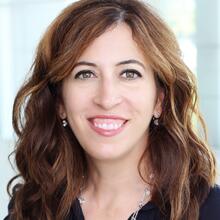Taylor Tomlinson is the star of the Netflix comedy special “Look At You” and is not known to be Catholic, other Christian or conservative. Yet in a video short, she shared her interest in getting off birth control: “Cause I’d love to meet me.” Provocative.
Ms. Tomlinson goes on to ask the audience if anyone’s gone off birth control. One responds that she did and then broke up with her boyfriend of six years. Another offers that her sense of smell changed, to which Ms. Tomlinson quips: “When I was on birth control, he smelled like my future. When I got off birth control, he smelled like my past.”
Both Android and Apple offer numerous apps to help women track their fertility—some have been downloaded over one million times—with over 500 apps currently available. Fertility tracking is a built-in feature in the iPhone Health app. Whether for the purpose of achieving or avoiding pregnancy, more and more women are interested in knowing how their fertile body works, to the exclusion of hormonal contraception.
The more women learn about their bodies and experience the direct impact of hormonal contraception, the more this growing minority looks for alternatives.
Over the years, I’ve seen one-off articles in fashion magazines indicating that a rethinking of birth control is underway. Back in the June 2003 issue of Vogue, for example, Reese Witherspoon offered her thoughts, calling it the “fallacies of feminism”:
That you have to decide whether or not you’re a working woman or a mother is not true. They don’t have to be mutually exclusive. And to feel inhibited by children? I think it’s strange. It comes from fear. I think modern birth control has thrown a big wrench in everything because it gives you too many options. It’s a false sense of security because then it renders you optionless at a certain point, and women are confused by that.
There is just so much to unpack.
Despite some of these trends, most Catholic women do not follow the church’s teaching on contraception. Among the Vatican’s Pontifical Academy for Life published proceedings from its plenary session last year, some contributors argued that the church’s teaching on birth control in “Humanae Vitae” could be changed to make some allowances for the use of contraception.
Those arguments were not left unanswered. In December, I participated in an academic conference, organized by the International Catholic Jurists Forum, which responded to the Pontifical Academy of Life’s publication. Then in May, I returned to Rome to participate in another conference organized by the Lejeune Foundation, some members of the academy and several European universities. Both conferences responded to Pope Francis’ call for theologians to explore the issue.
The May conference was less academic and addressed those living and promoting “Humanae Vitae” in day-to-day life—like parents, medical doctors, therapists, pastors, and Natural Family Planning and fertility awareness instructors. We are used to hearing that “Humanae Vitae” is difficult, but this conference communicated joy.
[Related: Natural family planning is the antidote to the harms of the sexual revolution]
One of the presenters, Isabelle Ecochard, a medical doctor from Lyon, France, told the story of a homeless woman who came to her asking to be taught fertility awareness. “My fertility is the only thing I have,” the woman said to Dr. Ecochard. Throughout my career, I have come across medical practitioners in refugee and migrant camps who have witnessed similar reactions when people are offered contraception and abortion in desperate circumstances.
To a Western mind, it seems counterintuitive: How can you have a baby when you have nothing? Not an unreasonable question. Pope Francis touched upon this in a May address to an Italian conference on birth rates. “The challenge of the birth rate is a question of hope,” he said. “Hope is nourished by each person’s commitment to the good, it grows when we feel we are participating and involved in making meaning of our own and others’ lives.”
For many people, especially women, that means having full knowledge of one’s fertility and the ability to embrace it. Francis’ reflection on hope, like so many Christian teachings, prompts us to ask: Who is poor? Those with hope and little material advantages or those with no hope and many material advantages?
The more women learn about their bodies and experience the direct impact of hormonal contraception on their bodies, their relationships and their lives, the more this growing minority looks for alternatives. They may not forgo contraception completely or decide to embrace all of the teachings in “Humanae Vitae,” but they are coming to a place of common ground with a longstanding teaching of the church. In the language of Pope Francis, that is where an encounter can begin.
Taylor Tomlinson’s comments about birth control resonated with me because I have heard women complain about hormonal birth control since I was a teenager. We are told it is the responsible thing to do, and then we struggle when it makes us feel worse than we were supposed to. (And to be fair, some women do report easier cycles with less severe PMS, or premenstrual syndrome. But these drastically different experiences only point to the need for more research.)
Article after article acknowledges that women report a variety of adverse events, including depression. And we haven’t even begun a conversation about the abortifacient effects of some forms of birth control.
I am somewhat flummoxed as to why there are efforts in the church to back away from Catholic teachings, particularly those on birth control. In society, there seems to be a growing trend to question, if not outrightly reject, hormonal contraception. When secular culture shows an increasing interest in health choices consistent with Catholic principles, perhaps we should enter into a serious dialogue before we try to change the teaching.








